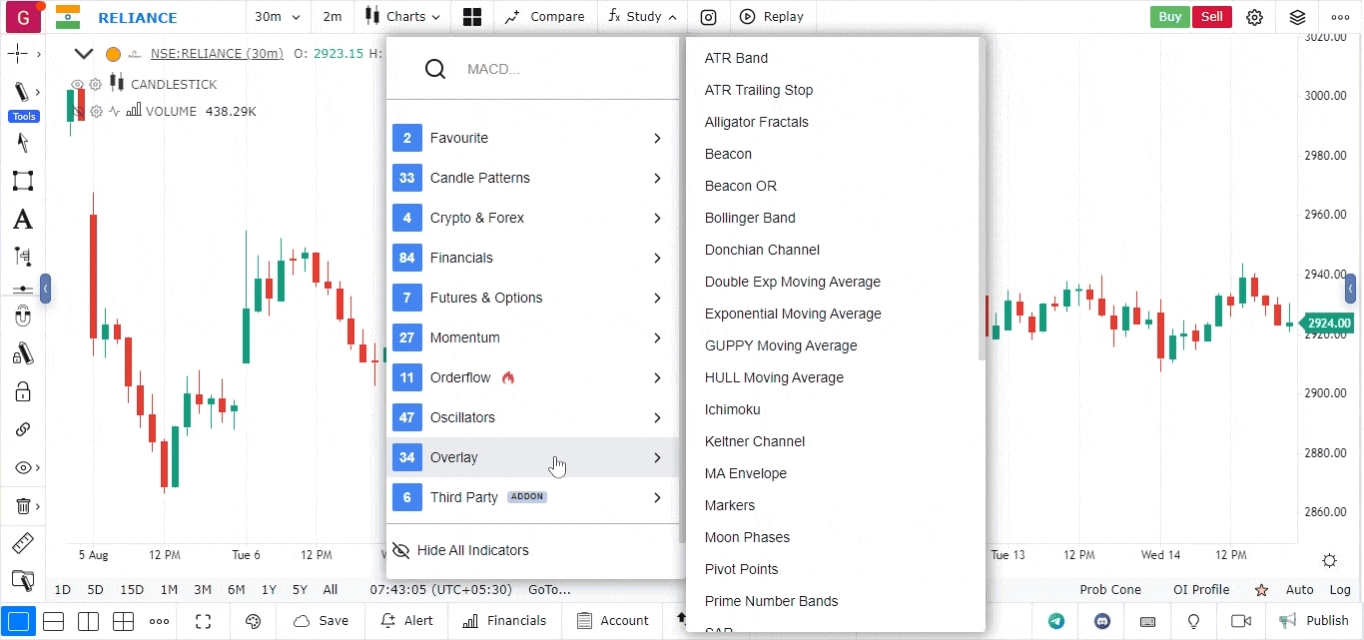Hull Moving Average (HMA)
The Hull Moving Average (HMA) is a technical analysis indicator designed to provide a more responsive and smoother moving average than traditional moving averages. Developed by Alan Hull, the HMA aims to reduce lag and improve trend-following strategies. You can easily implement the HMA to analyse price trends and make informed trading decisions. Below is a detailed overview of the Hull Moving Average and how to use it.
What is Hull Moving Average (HMA)?
The Hull Moving Average combines weighted moving averages and square root calculations to produce a smoother line that closely follows price movements. This responsiveness makes it useful for identifying trends and potential reversals without the lag typically associated with traditional moving averages.
HMA Formula
The Hull Moving Average is calculated using the following steps:
- Calculate the Weighted Moving Average (WMA):
- Calculate the HMA:
Where:
- = Price
- = Number of periods
How to Add HMA
-
Open the platform:
- Go to the platform and select the asset you wish to analyze.
-
Add HMA Indicator:
- Click on the Indicators menu in the top toolbar.
- Search for “Hull Moving Average” in the search bar.
- Click on the HMA indicator to add it to your chart.

- Configure Settings:
- You can customize the settings based on your trading strategy. Common settings include:
- Period: The number of periods to use for the HMA calculation (e.g., 9, 14, 21).
- Colour and Line Style: Adjust the colours and styles of the HMA line for better visibility.
- You can customize the settings based on your trading strategy. Common settings include:
How to Interpret HMA
-
Trend Identification:
- When the HMA line is rising, it indicates a bullish trend, while a falling HMA suggests a bearish trend.
- The slope of the HMA can also provide insights into the strength of the trend.
-
Buy and Sell Signals:
- Buy Signal: A buy signal may occur when the price crosses above the HMA, indicating a potential upward movement.
- Sell Signal: A sell signal can be generated when the price crosses below the HMA, suggesting a potential downward movement.
-
Crossover Strategies:
- You can use HMA in conjunction with other moving averages (such as EMA or SMA) to identify potential crossover signals, providing additional confirmation for entry and exit points.